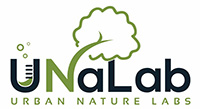 |
Inspiration Card
Co-Creation |
|
Format of the Tool
|

|
C10 Roadmapping
| Idea Generation | Stakeholder & Citizen Engagement | Need finding | Planning & Development | Evaluation | Learning |
|
Timeframe
|
|
|
Days
|
2-4
|
The aim of this workshop methodology is to develop roadmaps for the desired future scenarios of cities. A desk study is done to collect available information on technological options. Experts from industry, knowledge institutes and governments are invited to workshops to share their views on future possibilities.
1. Expert Selection
Selection of international experts and companies from different parts of Europe to cover a broad range of perspectives. Approximately 20 experts from industry, knowledge institutes, consultancies and government should be invited to interviews and workshops to share their views on future opportunities.
2. Structured interviews
The roadmapping interviews are held with a poster showing a timeline running until 2050. The needs of the city are shown at the end of the timeline. The interviewees are asked to identify relevant future options, and to indicate on the timeline when they thought these options would regularly be available. They should also be invited to create a storyline showing the expected developments over time, to gain understanding of the prerequisites for specific developments to take place.
All the input is collected on Post-it notes to allow easy reconfiguring of the storyline during the interview. The common needs were used to trigger the thinking of the interviewees and to inspired them to reflect on a wider range of technologies and options needed to achieve the desired future scenarios by 2050.
For these interviews, the requested expertise areas of the experts are not specifically their own innovation strategies, but rather their knowledge of important developments in their own fields. The Roadmapping method inspired the experts to use their knowledge to indicate the available options in the shorter and longer term, and to describe the potential developments over time.
3. Creating the general roadmap
The collected information from the desk study and the roadmap interviews is used in an expert meeting to identify the most relevant topics and to create a timeline for each of them showing when relevant options would become available on the path to meet the cities’ needs. All the results of the interviews are used to make a rich summary of the steps on the timeline. A maximum of 15 relevant future options is described for each topic, together with a short title and explanation and where possible including an example.
4. Aligning the general roadmaps of the three focus areas
In a cross-theme expert meeting the timelines for Smart Buildings, Smart Mobility and Smart Urban Spaces were aligned to gain understanding of the interlinking areas and potential options across several focus areas.
- Sticky notes
- A board
- Markers